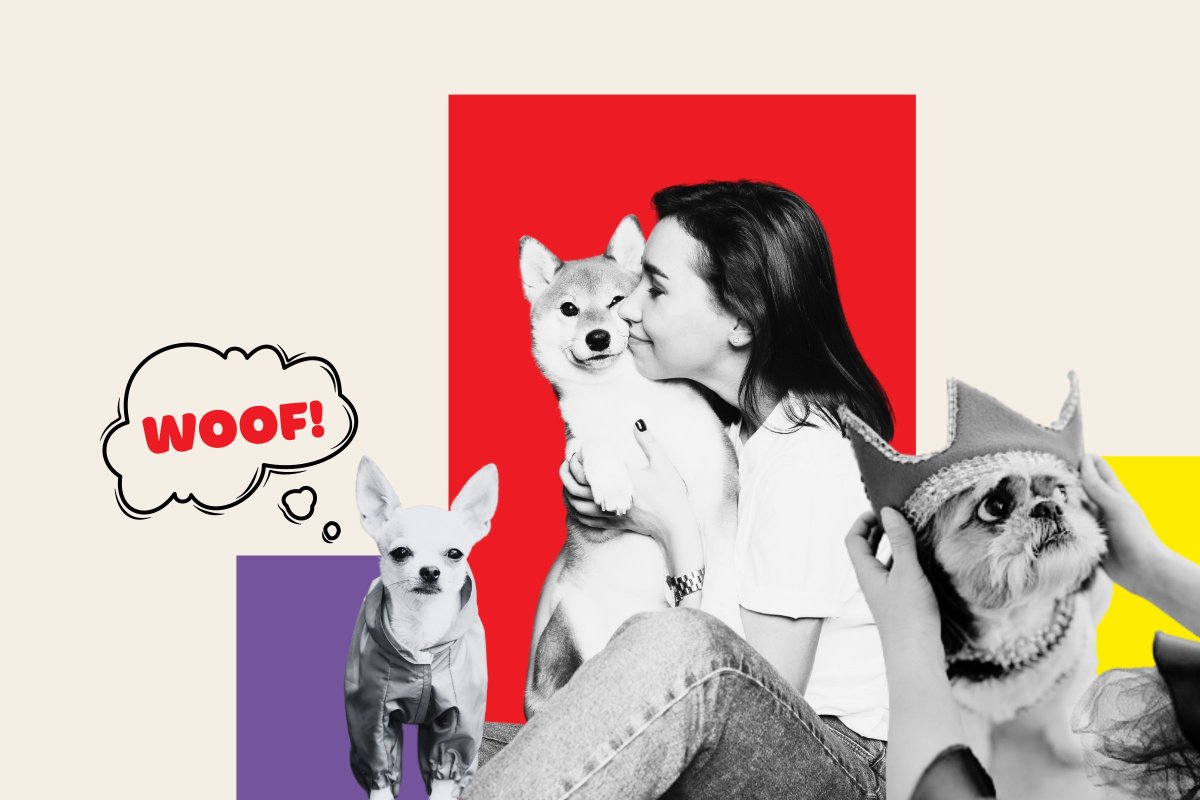Dogs can truly love their owners, but some common and seemingly tender human behaviors could backfire and trigger anguish in a beloved pet, according to canine experts.
Humans love dogs, data shows, and it's easy to see why. They're cute and cuddly. Their ability to learn numerous tricks and commands proves they're smart and useful. They're loyal, making them dedicated workers and companions. In the United States, more than 65 million households have at least one pooch and spend billions of dollars annually on their pets. In 2022, the latest data made available by the American Pet Products Association, pet owners are spending a whopping $136 billion. Studies have found that people even love dogs more than other people and are more concerned when they see animals suffering.
But is all that love and devotion reciprocated by our adorable four-legged friends, and if it is, how do they express it?
Evan MacLean, the founder and director of the Arizona Canine Cognition Center (ACCC) at the University of Arizona, has studied how dogs' minds are similar to humans, and how they differ.
If you have a dog that follows you around and always wants to be near you, that's one simple way to tell that your dog loves you, MacLean told Newsweek in an interview.

"We can learn a lot just by where dogs choose to spend their time," he said. "If they are regularly seeking proximity to you—settling down in the same room as you, snuggling up on the couch or bed, etc.—and are excited and eager to greet you when you return, these can be good indicators of the bond."
Another canine cognition expert, Zachary Silver, says there is a lot to learn from studying dogs, who lived alongside humans for more than 40,000 years. Silver, a professor of psychology at Occidental College where he runs a research laboratory "designed to understand how dogs view the social world," told Newsweek in a phone interview on Tuesday that his research seeks to understand how dogs navigate the complex social environment they live in.
Dogs' social cognition is "relatively similar" to humans, according to Silver, and the animals have a lot of "social savviness." Silver said that while it's nearly impossible to decipher exactly how dogs feel since they lack the ability to talk, research does indicate that dogs love their humans.
"Relying only on behavior makes it incredibly difficult to understand whether dogs display love, however, the hints that we do have from dogs' behavior, I think points pretty strongly to the fact that dogs seem to in fact love humans," he said.
Silver echoed MacLean's comments and said that proximity is a good sign of a dog's love, especially how much time they spend near their humans when there isn't food or treats present.
"The fact that dogs seem very motivated to spend time near us is definitely a strong indicator," Silver said. "I'd also take the fact that dogs demonstrate attachment to their human caregivers that very closely resembles the way that young infants in the human species form attachments to their primary caregivers."
Another sign that Silver mentioned isn't something that dog owners can spot. He said a study that was published in 2015 found that dogs and humans will simultaneously produce a surge of oxytocin when gazing into each other's eyes.
"This is the only known case of a cross-species oxytocin link, which suggests that dogs in fact do love humans," he said. "In the same way that we produce this hormone knowing that we love them, seeing their own production of oxytocin in return gives us a strong hint that dogs might be reciprocating that emotion."
As for some signs observed outside of a laboratory setting, Nick Horniman, a veterinary surgeon and founder of an online pet pharmacy, told Newsweek in an email interview on Wednesday that some common behaviors indicate a pet's fondness for their owner.
"Dogs can display several signs to show their affection to their owners, from wagging their tales to following you around the house and even bringing you their toys," Horniman said.
"The biggest and best sign, though, is just how enthusiastic your dog is when you are around, especially if they are excited when you come home."
When humans hug someone they care about, their bodies release oxytocin—also known as the "love hormone." This is the same hormone that helps newborn babies bond with their mothers, with oxytocin decreasing stress and promoting feelings of closeness, according to Harvard Medical School. However, dogs don't feel the same way.
"Hugging - ventral-ventral contact - is a very natural way for us to express affection as primates," MacLean said. "But it's not natural for dogs and can make them feel uncomfortable, potentially as if they are being captured or restrained. We can learn about better ways to express our affection by observing how dogs interact with each other. They regularly cuddle and express physical affection, just in different ways. Lying together side by side, leaning our heads against one another, or resting while maintaining some passive physical contact are good ways to go."
Horniman noted that some dogs may enjoy hugs from their owners, but if a dog is turning their head away or stiffening their body, it's a sign to stop the behavior because it's making them uncomfortable. Other signs dogs need their "space" is if they start panting, lick their lips or yawn, according to MacLean.
Through his current research, Silver is probing how dogs make sense of relationships between humans. He also said that dogs are excellent judges of character and are observing how their owners treat other humans.
"It could be the case that dogs are tracking how humans are interacting with each other and using that to decide how much they want to affiliate with a certain individual," Silver said. "I caution people, don't be mean to other people around your dog or your dog might get the perception that you're a mean person."
Whether you've adopted a new pet or just want to help strengthen the bond with your dog, MacLean said it doesn't take a lot. For the most part, being together is the key to building a good relationship with canines.
"Spending time together is one of the simplest but most effective things people can do to nurture a connection with their dog," MacLean said. "It's great if this includes a mix of passive and active forms of engagement. Good ways to actively engage include things like playing with a preferred toy together or walking and hiking. On the passive side of the equation, napping or resting together, and gentle petting are good paths to a dog's heart."
Silver said one way to build a strong bond is by engaging with dogs in a way that's natural through a "cooperative activity," such as going on walks and playing with puzzle toys and feeders together.
"These things are a really strong ways of strengthening that connection because the dog is doing something where they feel like they're working alongside you," Silver said. "Even playing a game of fetch - that sort of extends from the original relationship with dogs and humans had a cooperative hunting."
Uncommon Knowledge
Newsweek is committed to challenging conventional wisdom and finding connections in the search for common ground.
Newsweek is committed to challenging conventional wisdom and finding connections in the search for common ground.
About the writer
Maura Zurick is the Newsweek Weekend Night Editor based in Cleveland, Ohio. Her focus is reporting on U.S. national news ... Read more
To read how Newsweek uses AI as a newsroom tool, Click here.








